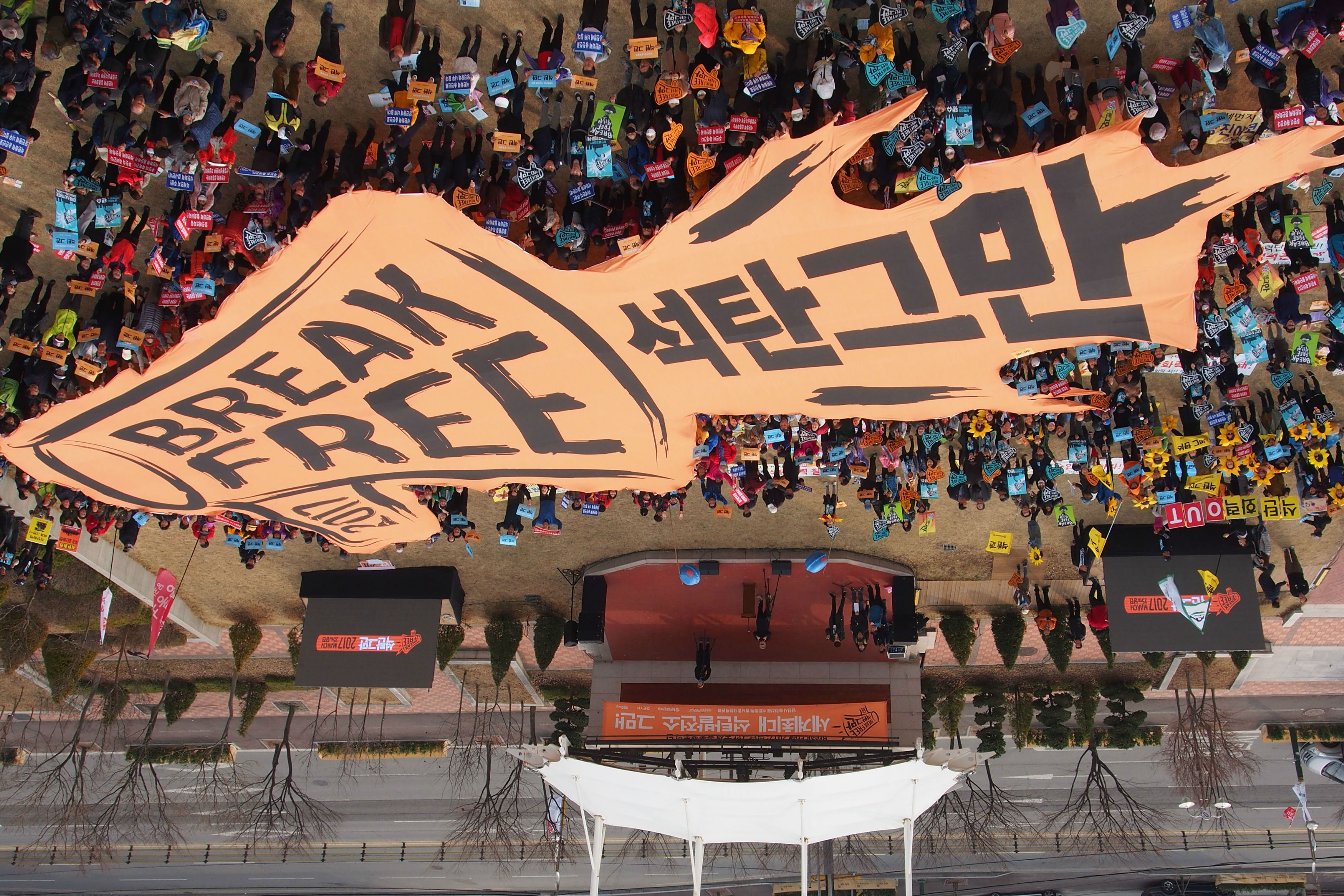On the far side of a dry rice paddy, where magpies scratch at the earth, stands Dangjin Coal-Fired Power Complex, the biggest coal plant in the world. Inside its blue-clad towers are ten giant units capable of generating almost 5,900 megawatts of electricity — enough to power some five percent of South Korea’s electricity grid. A forest of pylons and cables stretches off to the east.
20 kilometers away, on Mar. 25, protesters gathered on the lawn outside Dangjin Culture & Art Center. Activists and politicians in turn took the stage to vent their frustration at South Korea’s continuing relationship with coal power.
“How did we end up with the world’s biggest coal-fired power station in Dangjin? It’s infuriating! We need to stop building these plants!” thundered Minjoo Party lawmaker Eoh Kiyku.
A string of other speakers voiced frustration at South Korea’s anachronistic coal addiction. Local mayor Kim Hong-jang slammed the country’s plan to build two more units at the Dangjin plant. Delegates from Samcheok demanded that plans for a new coal plant near their coastal city be scrapped. Later, some 1,000 protesters marched through the streets with banners, led by a band of drumming high school students. Many locals looked on in bemusement.
South Chungcheong Province, where Dangjin is, lies at the heart of South Korea’s coal power dispute. 26 of the country’s 53 coal power plant generating units are located in this region on the country’s central west coast, about 100 km southeast of Seoul.

Coal, Dust and Hot Air: South Korea's Dirty Energy Habit
To continue reading, please subscribe
Help KOREA EXPOSÉ grow by subscribing
Monthly
₩10,000
$9
Basic rateQuarterly
₩30,000
$27
Quarterly rateAnnual
₩100,000
$90
17% reduced from the basic rateWe will send an automatic reminder seven days before the scheduled payment is processed.
If you are already a subscriber, please log in
Powered by Bluedot, Partner of Mediasphere